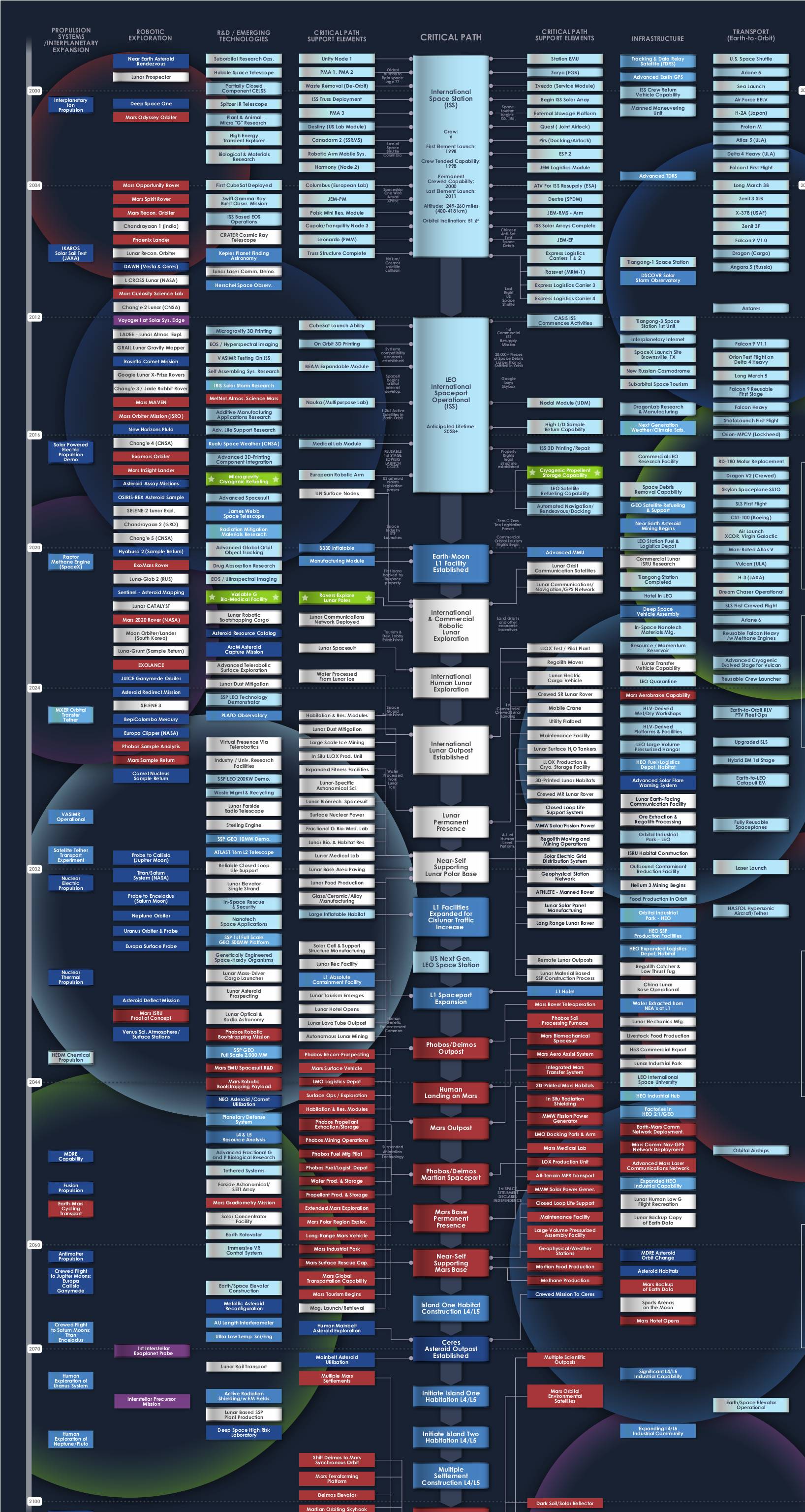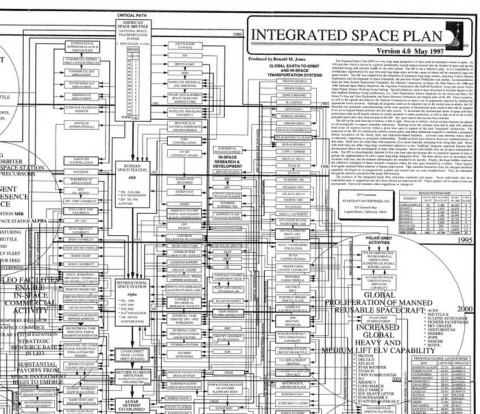
Integrated Space Plan: Crowdsourcing the Future

Here's a way to take part in shaping humankind's up and going trajectory into space. The crowdsourced Integrated Space Plan – an evolutionary matrix of capabilities — is billed as "the most comprehensive vision of the next 100 years of space development ever produced" – compiled into a single graphic.
Space history 101
In the late 1980s, Ron Jones – then working for Rockwell International – created the first Integrated Space Plan (ISP), a visual representation showing how major space infrastructure elements fit together.
Now a founding team member at Integrated Space Analytics, Jones continues to draw upon his architectural aplomb as an aerospace professional with 25 years of experience primarily at NASA, Martin Marietta, Rockwell, and Boeing.
Integrated Space Analytics was created by the Space Finance Group (SFG) in 2014. Members of SFG believed in the importance of the original Integrated Space Plan as a vehicle for teaching people about space.
A successful Kickstarter project campaign last summer made possible the funding of a new edition of the Plan. At present, work is progressing on developing a website that is an active and growing information resource for space professionals and others.

Guideposts up ahead!
The Integrated Space Plan is better described as a set of guideposts for things that will be needed, rather than a flowchart. The ISP is available in full-color poster format, but is also available for the first time through an interactive website.
Indeed, thanks to the Internet, a specially created website offers the Integrated Space Plan 2015, an edition that includes blocks linked to a page about the topic of the block.
Get the Space.com Newsletter
Breaking space news, the latest updates on rocket launches, skywatching events and more!
"We encourage ideas and feedback from the global aerospace community as we begin to apply crowdsourcing techniques to human expansion into space," notes Gary Bickford, Chief Technical Officer of Integrated Space Analytics (ISA).
"Over the next year, ISA will continue the Integrated Space Plan’s development with emphasis on Earth-moon transportation architecture and lunar base definition needs," Jones explains, "where the private sector is likely to play an evolving role."
Adds Steven Jorgenson, Chief Financial Officer and Venture Capital advisor of ISA: “One of our objectives is to offer the private sector insights into areas of future participation in space development.”
For more information on the Integrated Space Plan, go to: https://integratedspaceanalytics.com/
Leonard David has been reporting on the space industry for more than five decades. He is former director of research for the National Commission on Space and is co-author of Buzz Aldrin's 2013 book "Mission to Mars – My Vision for Space Exploration" published by National Geographic with a new updated paperback version released in May 2015. Follow us @Spacedotcom, Facebook or Google+. Originally published on Space.com.
Join our Space Forums to keep talking space on the latest missions, night sky and more! And if you have a news tip, correction or comment, let us know at: community@space.com.

Leonard David is an award-winning space journalist who has been reporting on space activities for more than 50 years. Currently writing as Space.com's Space Insider Columnist among his other projects, Leonard has authored numerous books on space exploration, Mars missions and more, with his latest being "Moon Rush: The New Space Race" published in 2019 by National Geographic. He also wrote "Mars: Our Future on the Red Planet" released in 2016 by National Geographic. Leonard has served as a correspondent for SpaceNews, Scientific American and Aerospace America for the AIAA. He has received many awards, including the first Ordway Award for Sustained Excellence in Spaceflight History in 2015 at the AAS Wernher von Braun Memorial Symposium. You can find out Leonard's latest project at his website and on Twitter.









